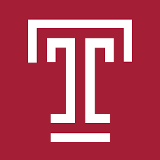Livingstone Undergraduate Research Award in STEM
Livingstone Undergraduate Research Award in STEM
John L. Nori

Assessment and Verification of Machine Learning Applications for Detecting False Data Injection Attacks in Automatic Generation Control
View John's project online
Over the past decade, continued cyberattacks on the evolving “smart” grid have led to nationwide blackouts and significant infrastructural damage. This research project proposal studies the application of three machine learning techniques in mitigating false data injection attacks on grid control systems: long short-term memory, generative adversarial networks, and cluster-driven ensemble learning. This project also presents a testbed framework—the SEED Internet Emulator—for future comparative study of cybersecurity measures in the smart grid.
What is your major and expected year of graduation?
I am an electrical engineering major expected to graduate in 2024. I am pursuing a concentration in computer engineering.
What inspired you to pursue your project?
This past summer, I worked as a research assistant in the Computer FUSION Lab at Temple University. The research involved the development of a cybersecurity and encryption testbed for secure group communication. Working on this project spurred my interest in cybersecurity, and I wanted to continue to develop my knowledge in this area.
My technical communication class gave me the opportunity to do so. I was delighted to learn that our main project would be on a topic of our choosing. The research process began right then and there as potential topics raced through my mind. I wanted to learn about something interesting to me and relevant to my field. Additionally, I sought something important, an issue or problem that directly impacts people’s lives. I browsed scientific websites and blogs, media outlets, and academic sources to gain some inspiration. As I continued researching, I found an article about a cyberattack in Ukraine that resulted in mass blackouts across the country. After some more reading, I determined that a significant portion of current research is focusing on applications of machine learning (an increasingly important topic in the world of electrical and computer engineering) to secure the “smart” grid and thus prevent such attacks. I decided that this topic would best allow me to improve my knowledge in two crucial engineering areas (i.e., machine learning and power distribution), and give me the opportunity to contribute toward resolving a serious global issue (i.e., cybersecurity of the power grid).
What does winning this award mean to you?
It is a great honor to be selected to receive the Livingstone Award and have my project spotlighted next to so many other tremendous works. The proposal that I have produced is the culmination of about seven months of work. I am glad that my efforts have resulted in something deemed useful and informative to the scientific and research communities. However, the paper itself is not the only outcome of the research process. I will value and utilize the skills and knowledge I have gained through my research for the rest of my academic and professional careers.
How did the Libraries support your research?
My research would not have been possible without Temple Libraries. I probably spent more time browsing databases such as IEEE Xplore, Knovel, and Science Direct than writing the paper itself. Temple Libraries provided an exhaustive collection of reliable sources on just about any topic that I was interested in writing about, and these sources are presented in an organized and easy-to-access fashion. Temple librarians also assisted me in learning how to navigate these databases (e.g., using keyword searches properly), in addition to managing my citations using Mendeley.
John confronted a worldwide problem: computer security. Over many drafts, he explored the literature deeply and found a gap in current research: the need to develop a new way to spot a certain type of cyberattack targeting, in particular, smart electrical grids. Contributing new ideas to a vast field like this requires understanding not just technology but also how it is used in the world. John’s article takes readers from a cyberattack targeting Ukraine, demonstrating the need for his proposed solution, to a technical analysis of potential future research, connecting his work to the wider scholarly conversation.
—Geoff Keston, Adjunct Associate Professor, College of Engineering
This category covers research methods used in the fields of science, technology, engineering, and mathematics. For the sciences, submissions will include a review of the relevant literature and a description of experimental results obtained through the scientific method. Technology and engineering submissions may take the form of a technical report or design document.
This award is generously sponsored by John H. Livingstone, SBM ’49.
